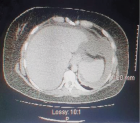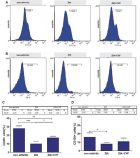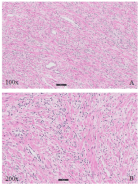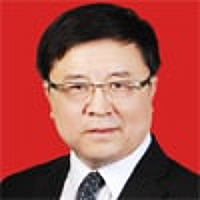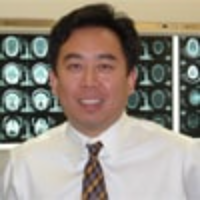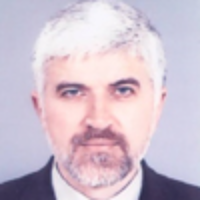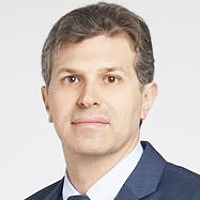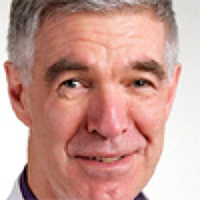Abstract
Research Article
Evaluation of the effectiveness of transcranial electrostimulation in treatment of neuropsychiatric disorders
Gagik Hakobyan*, Eduard Sekoyan, Karyna Shoman and Krasnopeeva Ekaterina
Published: 17 August, 2021 | Volume 5 - Issue 2 | Pages: 019-026
Objectives: Evaluation of the effectiveness the method of transcranial electrostimulation in treatment of neuropsychiatric disorders with the use of a patches by the company “Aganyan”.
Materials and methods: The study was a double-blind, randomized, placebo-controlled study, participated 106 patients with neuropsychiatric disorders. All participants in were divided into tables according to gender, age and diagnosis. Each subject was given the “Aganyan” patches and a special brochure, in which the method of application was indicated in detail. The wearable patch includes a flexible substrate, a binder an adhesive layer, with an electrode foil attached to it. Patients applied one patch behind each ear. The patches were applied for eight hours every third day for three months.
To assess the effectiveness of therapy in patients the following tests were used: The Montreal Cognitive Assessment Scale; MMSE Scale: Concise Mental Status Scale; diaries of observation of the patient’s condition to identify side effects; special brochures in which the subjects independently indicated the effects of the “Aganyan” patches. Tests were performed before and after the use of the “Aganyan” patches.
Results: When using the patches of the “Aganyan” company, none of the participants in the study had any side effects; According to the results of the Montreal test according to the criterion of memory and the MMSE test, the effectiveness of the patch was noted in patients with all clinical diagnoses. The greatest positive dynamics was revealed according to the results of the Montreal test according to the criterion of memory in patients with migraine (30%), insomnia (31%), vascular dementia (32%), and according to the results of the MMSE test in patients with diagnoses: cerebrovascular disease: consequences of a cerebral infarction brain (31%), vascular dementia (56%).
Conclusion: The patches of “Aganyan” company have proven its effectiveness through electrical stimulation with low-intensity current in patients in different age groups with different clinical diagnoses.
Read Full Article HTML DOI: 10.29328/journal.jnpr.1001041 Cite this Article Read Full Article PDF
Keywords:
Transcranial electrostimulation; Neuropsychiatric disorders; Patches of the “Aganyan” company
References
- Thair H, Holloway AL, Newport R, Smith AD. Transcranial Direct Current Stimulation (tDCS): A Beginner's Guide for Design and Implementation. Front Neurosci. 2017; 11: 641. PubMed: https://pubmed.ncbi.nlm.nih.gov/29213226/
- Russowsky A, Nitsche MA, Bolognini N, Bikson M, Wagner T. Clinical Research with Transcranial Direct Current Stimulation (tDCS): Challenges and Future Directions. Brain Stimul J. 2012; 5: 175–195. PubMed: https://pubmed.ncbi.nlm.nih.gov/22037126/
- Edwards D, Cortes M, Datta A, Minhas P, Wassermann EM, et al. Physiological and modeling evidence for focal transcranial electrical brain stimulation in humans: a basis for high-definition tDCS. Neuroimage. 2013; 74: 266-275. PubMed: https://pubmed.ncbi.nlm.nih.gov/23370061/
- Farahani F, Kronberg G, Rad MF, Oviedo HV, Par LC. Effects of direct current stimulation on synaptic plasticity in a single neuron. Brain Stimul. 2021; 14: 588-597. PubMed: https://pubmed.ncbi.nlm.nih.gov/33766677/
- Lu H, Gallinaro JV, Rotter S. Network remodeling induced by transcranial brain stimulation: A computational model of tDCS-triggered cell assembly formation. Netw Neurosci. 2019; 3: 924–943. PubMed: https://pubmed.ncbi.nlm.nih.gov/31637332/
- Brunoni AR, Moffa AH, Fregni F, Palm U, Padberg F, et al Transcranial direct current stimulation for acute major depressive episodes: Meta-analysis of individual patient data. Br J Psychiatry. 2016; 208: 522–531. PubMed: https://pubmed.ncbi.nlm.nih.gov/27056623/
- Brunoni AR, Ferrucci R, Fregni F, Boggio PS, Priori A. Transcranial direct current stimulation for the treatment of major depressive disorder: a summary of preclinical, clinical and translational findings. Prog Neuropsychopharmacol Biol Psychiatry. 2012; 39: 9–16. PubMed: https://pubmed.ncbi.nlm.nih.gov/22651961/
- Stein DJ, Medeiros LF, Caumo W, Torres IL. Transcranial Direct Current Stimulation in Patients with Anxiety: Current Perspectives. Neuropsychiatr Dis Treat. 2020; 16: 161-169. PubMed: https://pubmed.ncbi.nlm.nih.gov/32021208/
- Tortella G, Casati R, Aparicio LVM, Mantovani A, Senço N, et al. Transcranial direct current stimulation in psychiatric disorders. World J Psychiatry. 2015; 5: 88–102. PubMed: https://pubmed.ncbi.nlm.nih.gov/25815258/
- Elsner B, Kugler J, Pohl M, Mehrholz J. Transcranial direct current stimulation (tDCS) for improving activities of daily living, and physical and cognitive functioning, in people after stroke. Cochrane Database Syst Rev. 2016; 3: CD009645. PubMed: https://pubmed.ncbi.nlm.nih.gov/26996760/
- Vásquez KA, Valverde EM, Aguilar DV, Gabarain HJH. Montreal Cognitive Assessment scale in patients with Parkinson Disease with normal scores in the Mini-Mental State Examination. Dement Neuropsychol. 2019; 13: 78–81. PubMed: https://pubmed.ncbi.nlm.nih.gov/31073382/
- Brunoni AR, Nitsche MA, Bolognini N, Bikson M, Wagner T, et al. Clinical research with transcranial direct current stimulation (tDCS):challenges and future directions. Brain Stimul. 2012; 5: 175–195. PubMed: https://pubmed.ncbi.nlm.nih.gov/22037126/
- Reed T, Kadosh RC. Transcranial electrical stimulation (tES) mechanisms and its effects on cortical excitability and connectivity J Inherit Metab Dis. 2018; 41: 1123–1130. PubMed: https://pubmed.ncbi.nlm.nih.gov/30006770/
- Kar K, Krekelberg B. Transcranial electrical stimulation over visual cortex evokes phosphenes with a retinal origin. J Neurophysiol. 2012; 108: 2173–2178. PubMed: https://pubmed.ncbi.nlm.nih.gov/22855777/
- Stagg CJ, Antal A, Nitsche MA. Physiology of transcranial direct current stimulation. J Ect. 2018; 34: 144–152. PubMed: https://pubmed.ncbi.nlm.nih.gov/29877965/
- Liu A, Vöröslakos M, Kronberg G, Henin S, Krause MR, et al. Immediate neurophysiological effects of transcranial electrical stimulation. Nat Commun. 2018; 9: 5092. PubMed: https://pubmed.ncbi.nlm.nih.gov/30504921/
- Buzsáki G, Watson BO. Brain rhythms and neural syntax: implications for efficient coding of cognitive content and neuropsychiatric disease. Dialogues Clin Neurosci. 2012; 14: 345-367. PubMed: https://pubmed.ncbi.nlm.nih.gov/23393413/
- Zich C, Harty S, Kranczioch C, Mansfield KL, Sella F, et al. Modulating hemispheric lateralization by brain stimulation yields gain in mental and physical activity. Sci Rep. 2017; 18: 13430. PubMed: https://pubmed.ncbi.nlm.nih.gov/29044223/
- Kuo MF, Paulus W, Nitsche MA. Therapeutic effects of non-invasive brain stimulation with direct currents (tDCS) in neuropsychiatric diseases. Neuroimage. 2014 15; 85: 948-960. PubMed: https://pubmed.ncbi.nlm.nih.gov/23747962/
- YI S, Foerster Á, Nitsche MA. Transcranial direct current stimulation (tDCS) - application in neuropsychology. Neuropsychologia. 2015; 69: 154-175. PubMed: https://pubmed.ncbi.nlm.nih.gov/25656568/
- Giordano J, Bikson M, Kappenman ES, Clark VP, Coslett HB. Mechanisms and Effects of Transcranial Direct Current Stimulation. Dose Response. 2017; 15: 1559325816685467. PubMed: https://pubmed.ncbi.nlm.nih.gov/28210202/
- Moffaab AH, Martin D, Alonzo A, Bennabi D, Blumberger DM, et al. Efficacy and acceptability of transcranial direct current stimulation (tDCS) for major depressive disorder: An individual patient data meta-analysis. Prog Neuropsychopharmacol Biol Psychiatry. 2020; 99: 109836. PubMed: https://pubmed.ncbi.nlm.nih.gov/31837388/
- Antala A, Alekseichuk I, Bikson M, Brockmöller J, Brunoni AR, et al. Low intensity transcranial electric stimulation: Safety, ethical, legal regulatory and application guidelines. Clin Neurophysiol. 2017; 128: 1774-1809. PubMed: https://pubmed.ncbi.nlm.nih.gov/28709880/
- Sparingabc R, Mottaghyd FM. Noninvasive brain stimulation with transcranial magnetic or direct current stimulation (TMS/tDCS)—From insights into human memory to therapy of its dysfunction Methods. 2008; 44: 329-337. PubMed: https://pubmed.ncbi.nlm.nih.gov/18374276/
- Reinhart RMG, Cosman JD, Fukuda K, Woodman GF. Using transcranial direct-current stimulation (tDCS) to understand cognitive processing Atten Percept Psychophys. 2017; 79: 3–23. PubMed: https://pubmed.ncbi.nlm.nih.gov/27804033/
- Hakobyan G, Khachikyan K, Shoman K, Ekaterina K, Lilit M. Evaluation of the clinical effectiveness of the method of Skin Rejuvenation using Electrostimulation. Int J Dermatol Skin Care. 2021; 3: 01-10.
Figures:
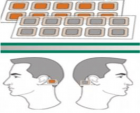
Figure 1
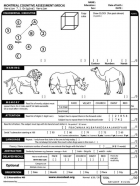
Figure 2
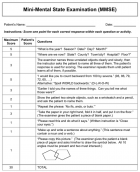
Figure 3
Similar Articles
-
Evaluation of the effectiveness of transcranial electrostimulation in treatment of neuropsychiatric disordersGagik Hakobyan*,Eduard Sekoyan,Karyna Shoman,Krasnopeeva Ekaterina. Evaluation of the effectiveness of transcranial electrostimulation in treatment of neuropsychiatric disorders. . 2021 doi: 10.29328/journal.jnpr.1001041; 5: 019-026
Recently Viewed
-
Leiomyosarcoma in pregnancy: Incidental finding during routine caesarean sectionToon Wen Tang*,Phoon Wai Leng Jessie. Leiomyosarcoma in pregnancy: Incidental finding during routine caesarean section. Clin J Obstet Gynecol. 2021: doi: 10.29328/journal.cjog.1001094; 4: 092-095
-
Adult Neurogenesis: A Review of Current Perspectives and Implications for Neuroscience ResearchAlex, Gideon S*,Olanrewaju Oluwaseun Oke,Joy Wilberforce Ekokojde,Tolulope Judah Gbayisomore,Martina C. Anene-Ogbe,Farounbi Glory,Joshua Ayodele Yusuf. Adult Neurogenesis: A Review of Current Perspectives and Implications for Neuroscience Research. J Neurosci Neurol Disord. 2024: doi: 10.29328/journal.jnnd.1001102; 8: 106-114
-
Late discover of a traumatic cardiac injury: Case reportBenlafqih C,Bouhdadi H*,Bakkali A,Rhissassi J,Sayah R,Laaroussi M. Late discover of a traumatic cardiac injury: Case report. J Cardiol Cardiovasc Med. 2019: doi: 10.29328/journal.jccm.1001048; 4: 100-102
-
A two-phase sonographic study among women with infertility who first had normal sonographic findingsKalu Ochie*,Abraham John C. A two-phase sonographic study among women with infertility who first had normal sonographic findings. Clin J Obstet Gynecol. 2022: doi: 10.29328/journal.cjog.1001117; 5: 101-103
-
Sinonasal Myxoma Extending into the Orbit in a 4-Year Old: A Case PresentationJulian A Purrinos*, Ramzi Younis. Sinonasal Myxoma Extending into the Orbit in a 4-Year Old: A Case Presentation. Arch Case Rep. 2024: doi: 10.29328/journal.acr.1001099; 8: 075-077
Most Viewed
-
Evaluation of Biostimulants Based on Recovered Protein Hydrolysates from Animal By-products as Plant Growth EnhancersH Pérez-Aguilar*, M Lacruz-Asaro, F Arán-Ais. Evaluation of Biostimulants Based on Recovered Protein Hydrolysates from Animal By-products as Plant Growth Enhancers. J Plant Sci Phytopathol. 2023 doi: 10.29328/journal.jpsp.1001104; 7: 042-047
-
Sinonasal Myxoma Extending into the Orbit in a 4-Year Old: A Case PresentationJulian A Purrinos*, Ramzi Younis. Sinonasal Myxoma Extending into the Orbit in a 4-Year Old: A Case Presentation. Arch Case Rep. 2024 doi: 10.29328/journal.acr.1001099; 8: 075-077
-
Feasibility study of magnetic sensing for detecting single-neuron action potentialsDenis Tonini,Kai Wu,Renata Saha,Jian-Ping Wang*. Feasibility study of magnetic sensing for detecting single-neuron action potentials. Ann Biomed Sci Eng. 2022 doi: 10.29328/journal.abse.1001018; 6: 019-029
-
Pediatric Dysgerminoma: Unveiling a Rare Ovarian TumorFaten Limaiem*, Khalil Saffar, Ahmed Halouani. Pediatric Dysgerminoma: Unveiling a Rare Ovarian Tumor. Arch Case Rep. 2024 doi: 10.29328/journal.acr.1001087; 8: 010-013
-
Physical activity can change the physiological and psychological circumstances during COVID-19 pandemic: A narrative reviewKhashayar Maroufi*. Physical activity can change the physiological and psychological circumstances during COVID-19 pandemic: A narrative review. J Sports Med Ther. 2021 doi: 10.29328/journal.jsmt.1001051; 6: 001-007

HSPI: We're glad you're here. Please click "create a new Query" if you are a new visitor to our website and need further information from us.
If you are already a member of our network and need to keep track of any developments regarding a question you have already submitted, click "take me to my Query."






